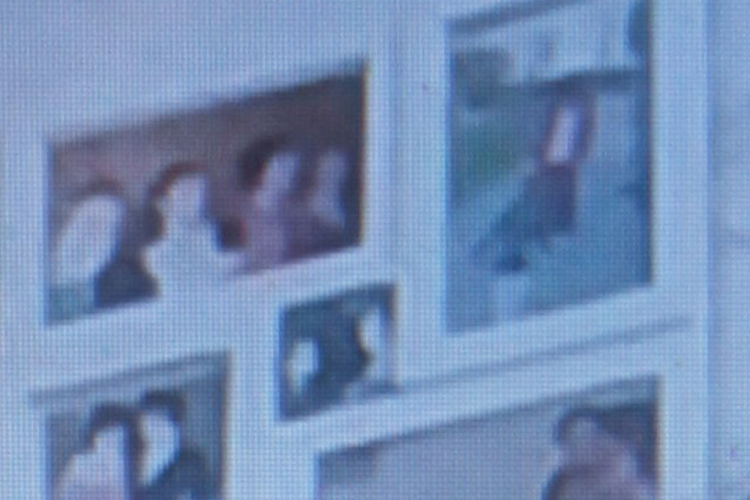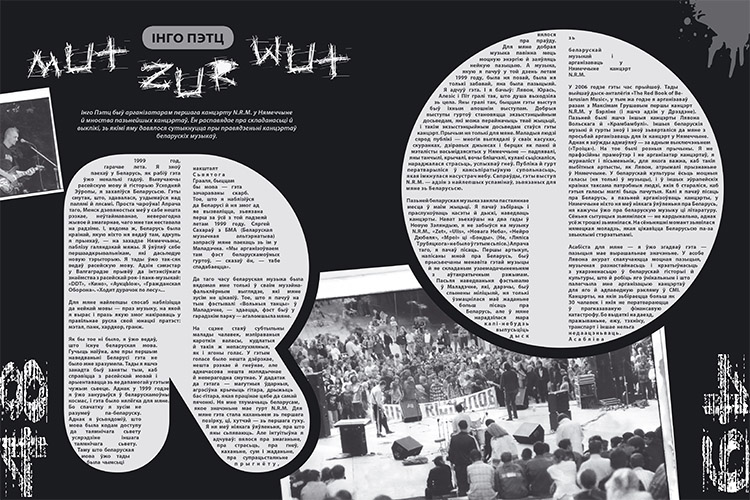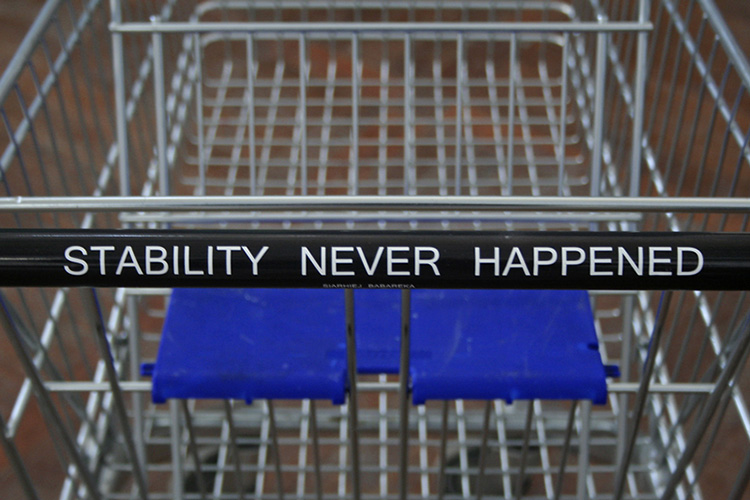
Аўтар: pARTisan, 14/08/2015 | SPECIAL
BELARUSIAN MUSEUM OF THE SOVIET: OWN PLACE IN THE EPOCH
pARTisan #27’2015
The subject of a (post-) Soviet Museum or the Museum of the Soviet is topical for all the former Soviet bloc countries. If in the scientific and humanitarian circles (and in case of Belarus, rather independent ones) during the last decade there have been discussions about the need to rethink the Soviet and to search for another paradigm of its representation, the museum field across the former Soviet space actually does not possess any projects, which would suggest the narrative about the Soviet, different from the ideological representation forms dating back to the Soviet times. The Museum of Soviet Occupation in Tbilisi and the Museum of Genocide in Vilnius can be recalled more as exceptions.
Is such a museum necessary in Belarus? What form can it take, and how would it differ from similar museums in other former Soviet bloc countries?
Alaksiej Bratačkin, a historian, the head of the concentration «Public History» (ECLAB), Iryna Ramanava, candidate of historical sciences, professor of European Humanitarian University, «The Belarusian Archive of Oral History» representative and Volha Ramanava, a specialist in cultural studies, the head of the concentration «Mass Culture and Mass Media» (ECLAB) dwell on these issues.
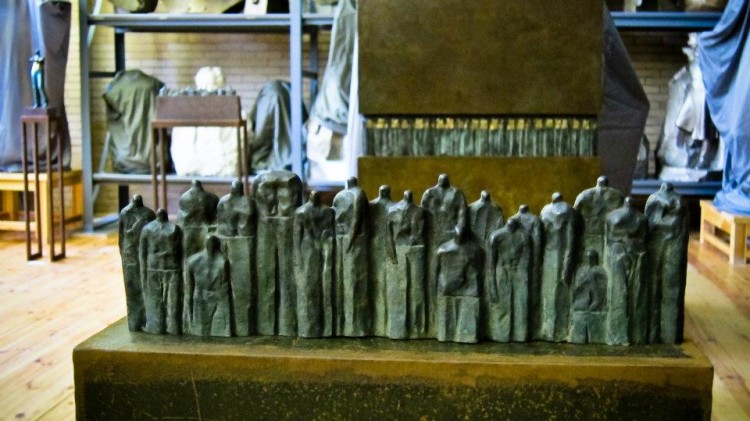
The exhibition by Kanstancin Sielichanau One and others. Museum of Z.Azgur 2012. Photo by A.Bratačkin
«THE GAP» SHOULD BE OUTLINED
Alaksiej Bratačkin: Does Belarus need a museum, where the issues of the Soviet past would be raised and talked about? Yes, it does. There is also another question whether in Belarus there have been or there are any expositions which are already linked to the Soviet epoch? And to form an answer to this question is much more difficult than to the first one.
What is happening with the representation of the Soviet past in today’s Belarus? Our current museum culture was formed in the Soviet era. We can say that our museums are actually the same as they were decades ago when they emerged: the content and concepts of expositions, the very idea of what a museum and museum culture are, understanding of the role of consumers of this culture — all these things were still largely defined by the Soviet context. Museums still consider themselves in such an educational aspect. Certainly, it is important, but within such a system visitors do not play any role. They are just provided with a certain set of artifacts and (specific) definitions, but their own reaction is not taken into consideration at all.
That is here a museum performs a rather repressive function: it imposes a certain vision of some events (including those associated with the Soviet past) and the viewer cannot do anything about it. A variability of narrative about the past is absent.
If we talk about some institutions that could potentially be used as a platform for the representation of the Soviet past, it is necessary, of course, to mention the House-museum of the First Party Congress in Minsk, which has existed for a long time. Now sometimes this institution tries to hold some exhibitions referring to the Soviet experience, but I would not call them successful interventions. In particular, not long ago I made a review of their exhibition of Soviet posters symptomatically called «Forever» (it opened in February 2013), which presented the Soviet poster art. But it was not in any way contextualized, being presented as it was. As a result, the exhibition acquired a specific nostalgic tone that was made evident in the guest book notes, where there was almost no criticism. For me, this exhibition became an example of a non-reflective approach to our own history, and that is what I wrote in my review — about how the Soviet should not be shown.
We also have the National Historical Museum, but the Soviet period is actually missing there: the first stage of the exposition ends up with a period of Renaissance culture, Francysk Skaryna’s activities, whereas other fragments of the exhibition refer to the urban culture of the 19th century, but also given in the specific context. Why the exposition looks like that is a different story. Another example is, of course, the Museum of the Great Patriotic War, which has always had the status of a museum of not only about the war, but also a place for Soviet ideology representation where the ideologem about the war is embodied. Today the renewed exposition of this museum also poses a big number of questions.
As for the museums of the Soviet period, or rather — a period of «the real socialism», I have recently had the experience of getting acquainted with the DDR exposition in Berlin, which dwells on the life under socialism in East Germany in the period between 1945 until and till the fall of the Berlin Wall. I liked the interactivity of the exposition. For example, there was a direct access to all the exhibits: you could hold clothes, objects, try typing the famous typewriter «Erika», enter a Stasi prison cell. To my mind, that museum seems to have found an optimal balance between the story of everyday life under socialism and socialism as a period of repressive structures formation.
Therefore, if to make the Museum of the Soviet past and its representation in Belarus, one of the objectives must be, of course, not only to tell about the Soviet daily life, but about its different perspectives in the Byelorussian SSR, not overlooking any critical moments.
In 2014 in the Minsk City History Museum supported by the Union of Designers of Belarus the exhibition «Back in VSSR» was held, its exposition contained various household objects of the epoch, with a minimal description and actually no concept at all given. Going through the whole guest book of the exposition, I found only one critical review which however had to do not with the show itself, but with the Soviet Union, in principle, claiming that everything was fine, but still we would recall the Soviet Union as a repressive machine. All other reviews were sort of a nostalgic character. But they also reveal that nostalgia today is no longer a living political resource: being nostalgic about the Soviet Union, people wrote they were very glad to see those objects which dated back to the «distant past». That is, for many of them some a kind of gap already occurred between the era of the Soviet childhood and the present day, which still needs to be comprehended by all of us.
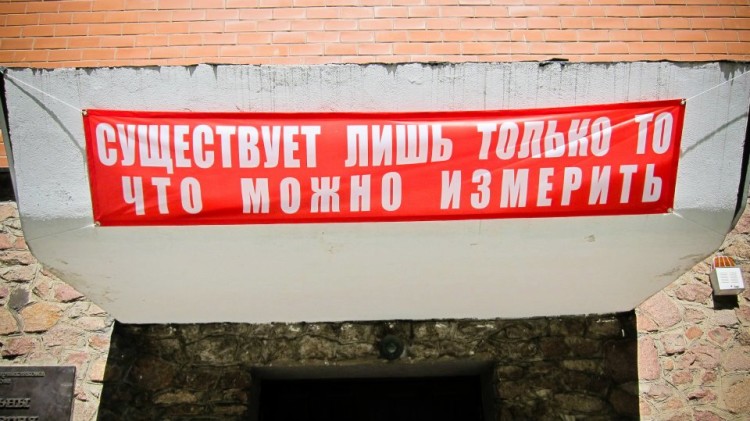
The exhibition by Kanstancin Sielichanau One and others. Museum of Z.Azgur 2012. Photo by A.Bratačkin
We remember that in the early 1990s nostalgia for the Soviet Union was a certain political resource, a number of political developments took place in Belarus on its background, when, for example, they began talking about the restoration of the Soviet. Now the situation has changed, despite the fact that we still miss the critical vision of the epoch. I attribute this to the fact that a number of specific topics of the Soviet past, for example, Stalin’s repressions, have not been processed and interpreted in Belarus yet. That is to say, no context has been created: some legal and philosophical precedents for a regulatory assessment of what was happening in the Soviet era. In fact, Belarus has taken the path of gradual forgetting, repression, silencing of some things. A symbolic gap with the Soviet basically has not been specified. At the Museum of the DDR I had a strong feeling that everything that was presented there as a part of the past would be perceived as present in Belarus.
Volha Ramanava: That is exactly why the Museum of the Soviet is needed: to outline the gap. Another question arises about the way it should look like.
In our museums talking about the past has always been understood as presenting a series of artifacts. Any historical exposition consists mainly of objects, photographs and reconstructions, which date back to a certain period of time. They are believed to be self-sufficient and context-setting, so it is enough just to put them behind the museum glass. In addition, some sacral attitude to these things drawn from the past is preserved: once you enter this «temple of the Museum», you may not touch them. According to this logic of museumification if you put all these artifacts together in your head like a puzzle, you will understand what history is. But it is not so, automatically you cannot get into the past like this, when you find yourself among the artifacts that date back to the 1920s or 1930s.
The past is something else, objects and reconstruction do not transmit even the atmosphere of the epoch — fears, hopes, survival strategies, everyday practices, etc. And it turns out that a formal approach and descriptive texts alone are not enough for the reconstruction and deconstruction of the Soviet history.
Now I find it hard to say exactly how the Museum of the USSR, or the BSSR, should look like. It must still be invented. But it is obvious that we must reject the forms of construction of the exhibition based on Soviet principles. Most likely, it must be both a museum and a research institution with a series of open platforms where you can raise and examine the most problematic and traumatic issues of our history. Cinematheque must be present there, because in some sense, a museum of the Soviet already exists — it is the Soviet cinema. But many screen meanings and the memories about their context are lost, so all the Soviet films also need to be commented and discussed. Also I see individual voices as being important, the living memory of the past that belongs to those people who can talk about their experiences of the Soviet life. Someone has traumatic experience, others see it as socially prosperous. And these voices need to be collected now; otherwise the real history will be rapidly replaced by myths.
Iryna Ramanava: The creation of such a museum and the formation of its exposition are hampered by the fact that, unlike, for example, the situation with the exposition on the Middle Ages, almost every potential visitor has their own ideas about the Soviet period (and largely, it is a personal experience of life in the USSR). Of course, there can be some nostalgia, the joy of encountering old, but a little bit forgotten symbols of the Soviet era. However, in what way will the essence of the regime be decoded in all these things? Naturally, we do not mean the creation of the analogue of the Museum of Genocide or the Museum of Soviet Occupation.
But how would the exposition reflect the conditionality of all the aspects, all the sides of the Soviet life by repressions and fear of their potential presence? And more importantly — how can their consequences be reflected?
Indeed, the repression is not only hundreds of thousands of the dead, but also millions of physically and mentally disturbed. While conducting interviews with those who were named as the victims of Stalinist repression, I faced the fact that till now these people have been afraid to talk about it. Morevoer, they feared not only for themselves, but for me (!). On the other hand, they remarked that both their parents and they were waiting for all their life for the issue to be publicly disclosed and the criminal Stalinist regime to be finally condemned. It would be very interesting to show in such an exhibition not only the construct of «how it was», but «how it could be but for…»
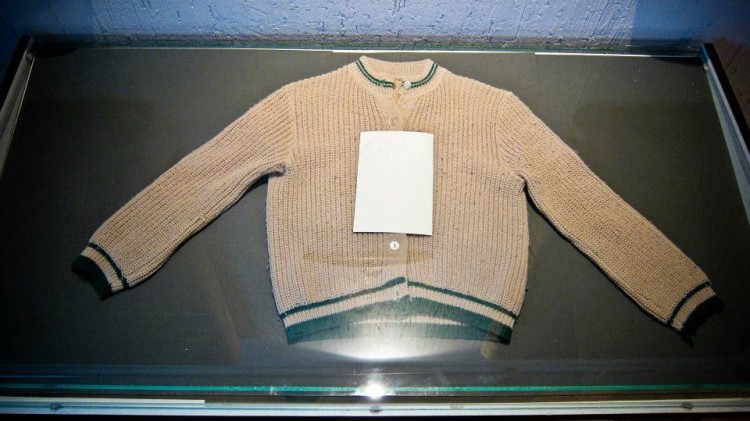
The exhibition by Kanstancin Sielichanau One and others. Museum of Z.Azgur 2012. Photo by A.Bratačkin
BALANCE BETWEEN REPRESSIONS AND DAILY LIFE
Volha Ramanava: In my opinion, Alaksiej has accurately outlined the conceptual framework of the Soviet museum. I agree with him that in its expositions it is necessary to find balance between the daily life and those repressive structures that were inherent to it and which must be identified and shown. But also it seems to be of no less importance to record the multivector inhomogeneous nature of the Soviet. Lecturing about the Soviet culture research, I face the fact that today’s young people see the Soviet past as a solid gray uniform field that gradually blends into present day. But it did have different periods, encompassing various social, political and cultural processes, inhomogeneous social strata. For example, films of the late stagnation and perestroika periods depict very clearly from the inside how active processes of deconstruction of the Soviet were evolving.
Iryna Ramanava: How to put it all together is not a simple question. And what is even more important: is it possible to found such a museum in our country today, at all? Meanwhile time goes by, and the new generation is becoming less aware of what was happening then. Here is a simple example. For a long time I have been lecturing a course «The History of the Soviet Daily Life» and I noticed one tendency. The things and phenomena of the Soviet era processes which used to be obvious and understandable for the previous generations of the students become incomprehensible for today’s students without special explanations provided. However, how realistic is it to reflect the daily life in the museum not through the set of relics, but showing behaviors, coping and promotion strategies used by the Soviet people in those specific socio-political conditions? And to what extent is it possible in these daily interactions to reflect the state’s role and participation?
Volha Ramanava: At the same time there is still a «disciplinary» division into different areas. On the one hand, here are the achievements of Soviet economy, Soviet art, Soviet way of life, whereas repressions present the «other side» of the Soviet world, which seems not to have anything to do with all of these. Such an approach is clearly visible in the traditional artistic studies. Indeed, no one denies the fact of repressions. Yes, they really took place, it was mentioned, for example, in the academic four-volume «History of Cinema in Belarus», published in the 2000s. In the section on the 1930s cinema, for example, there is information about the campaign against «bourgeois nationalism» or the fact of an actress’ repression while being filmed in a particular movie was mentioned. And further there is classical analysis of the film’s genre and visual content.
This is a good example of how so far we have been having a double vision: repressions are a sort of a historical fact put into «a photo frame», it has been said enough of, and now let us talk about the national art achievements and about our national character. And this research problem has not been solved yet. How can we talk about art, artistic images and «the national» in the light of the mechanisms of violence and control, which in the Stalin years determined all the stages of the creation of works of art (and all the levels of life)? And at the same time we need to observe these processes from different viewpoints and in a historical perspective, since only such an approach allows us to see how totalitarian tendencies have been evolving.
Alaksiej Bratačkin: I agree that our task is not just to show the Soviet daily life, but also the way this routine was structured by the Soviet ideology, cultural and political practices, by the power and so on. And this, in particular, refers to the contemporary Belarusian society in which many people do not understand and do not see how politics structures their lives. They think that having some personal space at their disposal they can exist independently, but it is quite a big illusion.
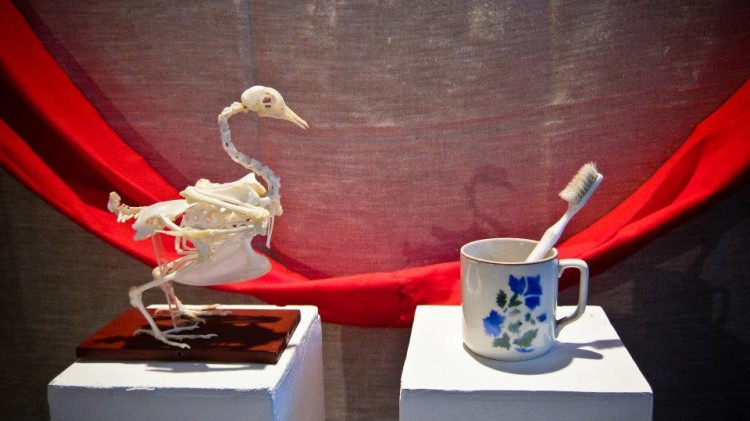
The exhibition by Kanstancin Sielichanau One and others. Museum of Z.Azgur 2012. Photo by A.Bratačkin
Getting back to the Lithuanian example — the Museum of Genocide. The foundation of this museum was determined by a certain policy adopted by the Lithuanian society: historical politics or the politics of memory, as it is called by historians. The thing is that they tried to use history to maintain some images important for the society, for the formation of collective identity. And if to speak about Lithuania, the concept of two occupations — the German and the Soviet ones — has been chosen, and within this concept the emphasis was made on the repressive Soviet politics. This is one of the reasons of the appearance of the Museum of Genocide, which, it should be noted, is located in the former KGB building, which has been preserved with the walls being covered with the plates with the victims’ names on them. With concerns Belarus, here the politics of memory was developing in a different way. Therefore, if we talk about this museum, we might follow the example of Lithuania and to create the Museum of Occupation. Although I am not a supporter of such a populist approach. Or we might choose a different approach and to show the mechanisms of the Soviet power, the Soviet society, the Soviet modernization, which were not only working in Belarus, being the result of not just a «foreign occupation», but were also determined by internal transformations.
Many Belarusians were involved into these processes. And to show it all is a more difficult path, the path of historical responsibility. But anyway, we have to understand our own place in the Soviet epoch.
Iryna Ramanava: Of course, when creating a museum, not only Soviet films would be extremely relevant, as Volha suggested, but also people’s memories. Especially, keeping in mind all the huge volume of the work carried out by the Belarusian Archive of Oral History. Today we have more than 900 memories recorded, all of them are directly connected with the Soviet past (www.nashapamiac.org). So we do have what to choose from. Cutting fragments from video interviews and embedding them into the exposition is a technical matter. Also, at the moment the work is being done in forming the exposition of the virtual museum of Soviet repressions and resistance in Belarus (www.represii.net). For this exposition video interviews of the repressed were recorded, documents relevant to the topic were copied and the exhibits catalogue was made. Unfortunately, to use the potential of these two on-line projects is not possible for the presentation of the Soviet past in the form of museum exhibitions in the current environment.
Alaksiej Bratačkin: I think that one of the features of Belarus is such a virtualization of the memory of the Soviet past. There is an explanation of why we fail to create a full-fledged institution. Just until recently the genealogy of the Belarusian state has been linked directly with the Soviet state (in the propaganda discourse of the existing political regime). In this sense, obtaining independence in 1991 was not seen as something special. In all Belarusian textbooks for a long time it has been written that the BSSR legacy is a determining factor of the contemporary Belarusian statehood. And recently, in the course of one of the official round table discussions some historians even managed to say that we should thank Stalin for our statehood.
Therefore, the creation of the museum of the Soviet past in Belarus will require several things. Only good will of the people who are already engaged into the topic will not be enough. It is necessary to revise the regulatory assessment of the Soviet, but it will require the participation of not only the society, but also of the political elite.

The exhibition by Kanstancin Sielichanau One and others. Museum of Z.Azgur 2012. Photo by A.Bratačkin
GIVE PEOPLE A VOICE
Volha Ramanava: Undoubtedly, in order to create such a museum there must be an access to the archives which have not been completely open and made public yet. But opening archives supposes not only a possibility to access the information; it is also a symbolic act of the state, which thus separates itself from the Soviet state. I hope that one day it will happen. At some point, this borderline will be drawn, and then we will be able to talk about the beginning of a new history of Belarus. But there is one more important and painful moment: disclosing the archival documents which are still inaccessible today, especially those related to repression raises an ethical problem — the problem of symbolic guilt felt by the descendants of those who wrote denunciations, worked in the state organs or just did not want to know anything.
Alaksiej Bratačkin: This raises another interesting question of whether the Museum of the Soviet will be able to become one of the tools of lustration and if it is necessary? If such an institution as the Institute of Memory in Poland were set up, then what it would be like? As we know, the denazification in Germany was progressing in a very hard way. In the Topography of Terror Center in Berlin a separate part of the exhibition is devoted to the 1950-1960s, to the things that occurred with the Nazis after the war. And there are a few photos exposed there, where these people, for example, water flowers in their own gardens, the Congress of SS veterans is shown. That is, the Germans showed no act of revenge, which took place, but the complexity of the process of denazification in principle, when for different reasons someone escapes responsibility and the society turns a blind eye on the time. This question is important for us. We have a big number of victims, but no one has been punished. And should we demand the punishment and how can it be reflected in the museum exhibition?
Iryna Ramanava: The fact that it is in no way and never articulated gives the young people a reason to be proud of one’s grandfather’s deeds in the NKVD, and historians — to write about Stalin merits. And it would be good to find in the future in the museum some space for both the story of this grandfather’s serving for the NKVD and for his grandson’s being very much proud of him, space for a story of that historian, who was praising Stalin. Not in the sense of the simple inclusion of the fragments of eyewitness accounts, but in terms of the development of these subjects by means of the exposition formation.
And there is another side, too: people who were persecuted, survivors, their children and grandchildren are still waiting to be finally given a voice and their stories to be told.
During that short period of the early 1990s they did not have time to say anything. For example, one of the characters of my film «Special Settlers. Peasant Tragedy» told us that her mother’s family had been sent into exile as a part of the group of 17 people, whereas the family of her dad — within the group of 11 people and only her mother and father survived. Having a baby in those difficult conditions was motivated by the fact that «at least there will be someone to tell others about the way how people lived and died there». And my character was living with the idea that her mission was to bring this idea to people. So, such stories should also find a place in this museum.
Alaksiej Bratačkin: I also experienced this during my participation in the expedition of oral history to Babrujsk: no one had ever asked people there. I had a fear that no one would tell me anything. But it was impossible to stop them! People really want to get a voice.
BELARUSIAN MUSEUM OF THE SOVIET
Alaksiej Bratačkin: Naturally, the Soviet period in Belarus has its own peculiarities and differences from other countries of the Soviet bloc, which should be reflected in the museum. This will also be our interpretation of the Soviet, and this is a big problem for people’s perception of the work of contemporary museums and historians. Many people still perceive history as a kind of «objective» narrative, and at the other end of this perception there is an idea that we can say… anything about history. The Museum of the Soviet might be a good example of another view on history: which does not show us the past «as it was», but at the same time the version of the past is not an arbitrary interpretation, everyone should understand how to work with the history now.
Volha Ramanava: To do this we need to make a separate room available for contemporary artists. For example, we can talk about a communal apartment as about a specific place where a real Soviet citizen was born as well as the Soviet collectivism. Or we can show Ilya Kabakov’s installations.
Alaksiej Bratačkin: It is also necessary to understand that when we define the Museum of the Soviet as a historical museum, then what do we imply? Is it an artistic intervention or an exhibition with the names of the historians who reviewed or created it? This is a complicated question.
And one more global issue remains — traumas. In Belarus, the trauma of separation from communism at some point became more relevant than the trauma of communism. Why did it happen? The problem of creating of the Museum of the Soviet is an attempt to analyze the structures of the collective perception of history in Belarus. Why is something recognized as a trauma (for example, the effects of World War II), while other events of the Soviet period do not have such a status? Should they be given such a status, or we agree to develop various practices of oblivion?
December, 2014
Opinions of authors do not always reflect the views of pARTisan. If you note any errors, please contact us right away.



